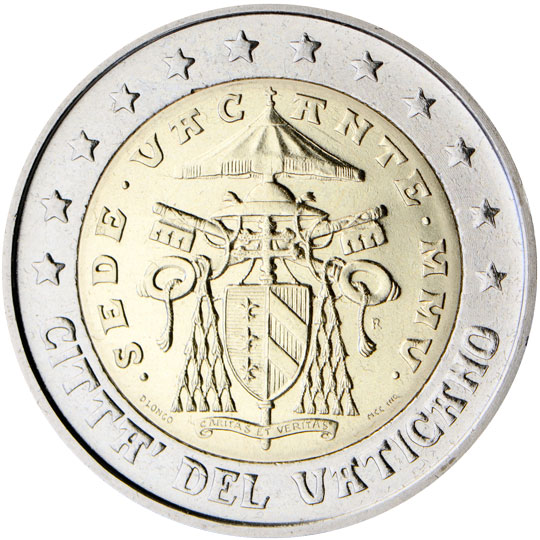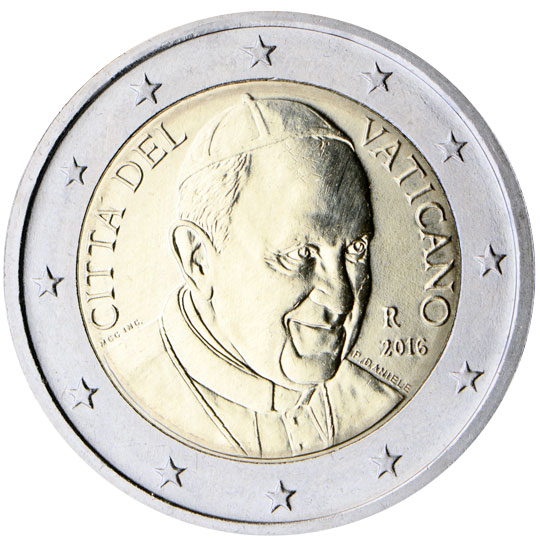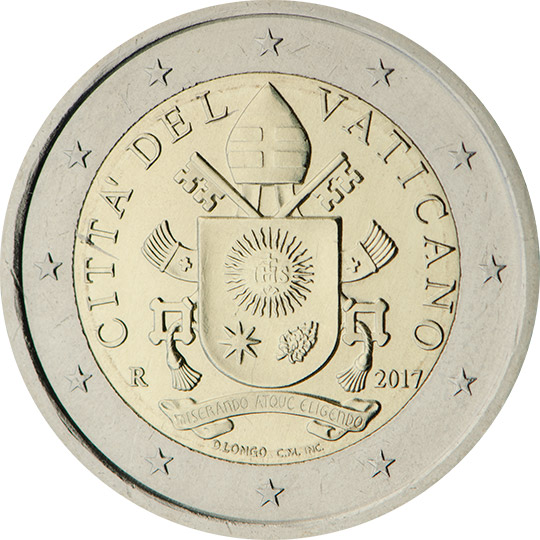



Updating the effigy featured on circulating coinage is common when a change of monarch occurs, such as in the case of the death of the late Queen Elizabeth II and ascension of King Charles III to the throne, or the abdication of Denmark’s Queen Margrethe II to pass the title on to her son, King Frederik X. This is also the case with the Vatican – the smallest sovereign state in the world located within Rome.
Rather than waiting until the election of a new pontiff, however, the Vatican changes its coinage to ‘Sede Vacante’ (‘Vacant Seat’) pieces to mark the transitional period. The most recent example of this is of course the death of the late Pope Francis in April this year, with his successor Pope Leo XIV appointed in May, 17 days later.
Sede Vacante coins feature symbols representing the Pope, but no effigy. Three symbols are typically included – two crossed keys (representative of St Peter), an ombrellino (papal umbrella), and the coat of arms of the acting Camerlengo (Cardinal Chamberlain, who sits as Acting Sovereign during the vacant period).
The Sede Vacante period can vary, but is often not too long-lasting – particularly in the modern era of faster methods of transport where Papal Conclave members can reach the Vatican far more quickly. Mintages of these coins is therefore often low, as production only lasts as long as the period does.
A new commemorative coin is also likely to be produced, with the Vatican authorised by the European Central Bank to mint a commemorative €2 coin (only one coin, not a series) upon the vacancy of the Holy See. This is in addition to the two €2 commemoratives that countries using the euro as its official currency may issue per year. The last coin of this type was released in 2013 following the resignation of Pope Benedict XVI.
 The original euro coins, bearing the effigy of the Pope (above) and the more recent version with the papal coat of arms instead (below).
The original euro coins, bearing the effigy of the Pope (above) and the more recent version with the papal coat of arms instead (below).A new series of circulating Vatican euro coins is also expected to be issued, likely featuring either the effigy of Pope Leo XIV or his coat of arms. The Pope’s effigy had featured on all circulating coins following the adoption of the euro in 2002, including the first euro series issued during the papacy of Pope Francis. However, the latest (fifth) series introduced in 2017 displays the papal coat of arms, replacing the Pope’s portrait, who reportedly did not wish to be ‘venerated’ in this manner.
Separately, the Governorate of Vatican City State has announced the undertaking of an extensive process of review and renewal of the State Mint and of the Philatelic and Numismatic marketing activities, aimed at ensuring greater efficiency, quality and transparency in all aspects of its operations.
There is a new platform and procedures for customer registration (providing greater data protection), and a renovated e-shop intended to offer ‘a modern, intuitive purchasing experience open to collectors from all over the world’, accompanied by the redesign of its entire sales strategy to facilitate transparency and the widest possible accessibility.
Environmental sustainability was noted as a priority in both product design and material choice. Every aspect – from packaging to information systems – has been redesigned to reduce environmental impact, adopting green criteria and either entirely recyclable materials or at least those with low ecological impact.
Both philatelic and numismatic production continued during this overhaul, with products dedicated to Pope Francis, the Jubilee Holy Year 2025, the Sede Vacante, and the inauguration of Pope Leo XIV regularly produced.